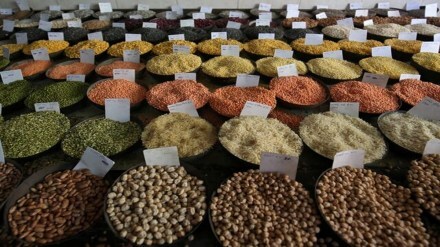Unless climatic shocks occur, food inflation will be milder in the short term, allowing rural incomes and demand to get stronger, the finance ministry said on Thursday, in its monthly economic report. Amid global uncertainties, low oil prices are a bright spot for the economy, the ministry said.
A challenge on the macroeconomic front, according to the report, is in navigating the continuing uncertainty in global economic prospects. “We will likely encounter a cycle of policy rate cuts globally, amid fears of a recession in advanced economies and continuing geopolitical conflicts.”
On September 18, the US Fed lowered its benchmark interest rate by 50 basis points, for the first time in four years, an aggressive start to a policy shift aimed at bolstering the US labour market.
India’s food inflation came in at 5.66% in August, the second lowest rate since June 2023.
The report also warned against incipient signs of strains in certain sectors, and cited moderating sales of passenger vehicles and a build-up of inventory in the auto industry. Data from Nielsen IQ indicated that the growth of fast-moving consumer goods sales in urban areas slowed in Q1 FY25, it noted. “While these (strains) may turn out to be transient with the onset of the festival season, they warrant monitoring,” they said.
The Gross Domestic Product (GDP) growth of 6.7% in Q1FY25 and the movements in high-frequency indicators till August fit well with the growth projection of 6.5-7% for FY25 provided by the Economic Survey 2023-24, added the report prepared by economists in the ministry.
“Most high-frequency indicators on the supply side suggest continuing economic expansion in the current quarter. Steady growth in GST collections, expansionary trends in purchasing managers’ indices and growth in air and port cargo indicate vigorous economic activity,” the report said.
On foreign trade front, the report was cautious. “Global trade dynamics are rapidly evolving. Geopolitical conflicts, trade disputes, climate change, and advances in Artificial Intelligence are reshaping the contours of international trade in terms of protectionist trade policies and shifting global supply chains,” it said.
For the remaining part of the financial year, a reasonable expectation is that public expenditure in India will pick up, providing added growth and investment impetus, said the report. In the farm sector, higher kharif acreage is already visible. Adequately replenished reservoir levels will potentially give a fillip to the upcoming rabi crops as well. The skewed spatial distribution of rain may have an impact on farm output in a few regions.
Further, capital spending by Indian states has declined in the current financial year. Stock markets around the world are booming, reinforced by recent policy announcements in a few countries. Consequently, the risk of an eventual correction has risen.
“If the risk materialises, the spillover effect may be felt globally as well. Amidst these concerns, low oil prices is a bright spot for the economy,” the report added.
